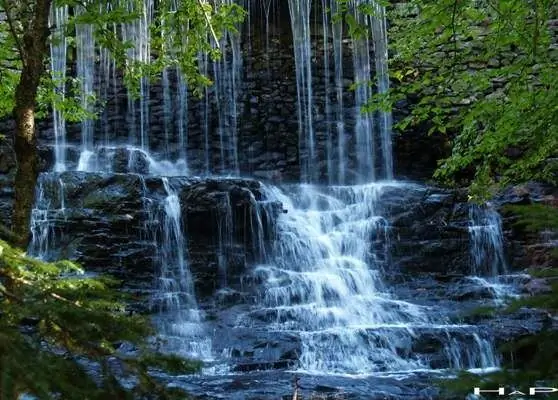Going on a long hike, it is not always possible to take with you a sufficient supply of fresh water; it has to be replenished from sources that come across on the way. How to find drinking water and assess its quality?

Instructions
Step 1
If you find yourself in a forested area, look for water in natural lowlands. In the spaces between forests, streams and small streams can be found by the characteristic thickets of bushes and trees along their channel.
Step 2
Swamp water is quite drinkable, but collect it in places where the surface is not covered with a cloudy whitish film. The presence of a film indicates that the water is standing, it can only be collected as a last resort and must be boiled. Pure running bog water can be drunk immediately, after passing it through a filter, it can be made from several layers of fabric. In the simplest case, drink through the cap, putting it on the water, carefully scoop up the water through it and fill the containers. This applies only to Russian swamps, in countries with hot climates, swamp water must be disinfected by boiling or adding disinfecting tablets to it.
Step 3
In mountainous terrain, look for water in rock crevices and natural grooves where it accumulates after rain. The path to the water can be indicated by animal paths and circling birds.
Step 4
The most difficult thing is to look for water in the steppe and desert areas. There may not be any open bodies of water nearby; bright lush grass will indicate the proximity of water to the surface. Dig a hole in such a place and wait for water to seep into it. You can also find moisture in the bed of a dried-up stream.
Step 5
If you cannot find a source of water, you can evaporate it using a film condenser. In the ground, in the wettest place, dig a hole about a meter in diameter and 50-70 cm deep. Cover it with transparent plastic wrap, put a stone in the center so that the film sags. Place a container in the hole under the sagging film. Dig in the edges of the film carefully. Condensation drops will run down the inner surface of the film and collect in a container. You can get up to two liters of water from one such hole per day. To increase the amount of water in the pit, you can throw raw grass.
Step 6
To find potable water by the sea, dig a hole about a hundred meters from the water's edge. The groundwater here can be brackish, but potable. If the coast is steep, look for streams flowing from under its base, they come across quite often.
Step 7
Somewhat exotic, but quite workable, is the way to search for water sources using dowsing frames. They can be two pieces of wire bent at right angles in the form of the letter "G". The length of the handle (short part) is about 15 cm, the second part is 35 cm long. Keeping the frames parallel in front of you, concentrate on finding a source of water in the area. Set the scan distance mentally - for example, 1 km. Turn slowly in a circle - if there is an open source of water within a kilometer, the frames will converge when you face it. If there is no water at a distance of a kilometer, increase the scanning radius. The frames can also determine the depth of water in the ground - for this, mentally count the meters, when the desired value is reached, the frames will converge. This method can demonstrate amazing accuracy, allowing very accurate access to water sources.






